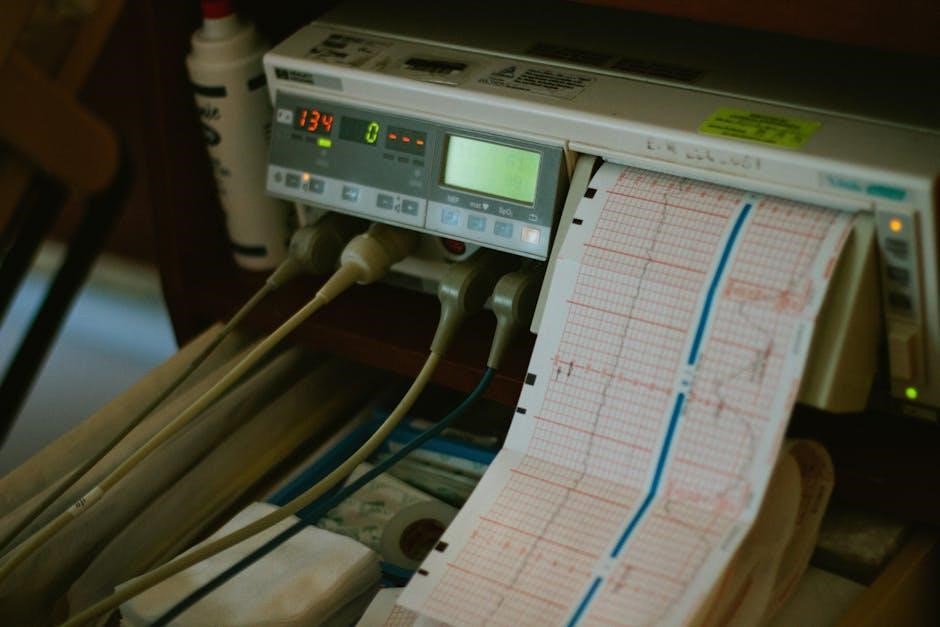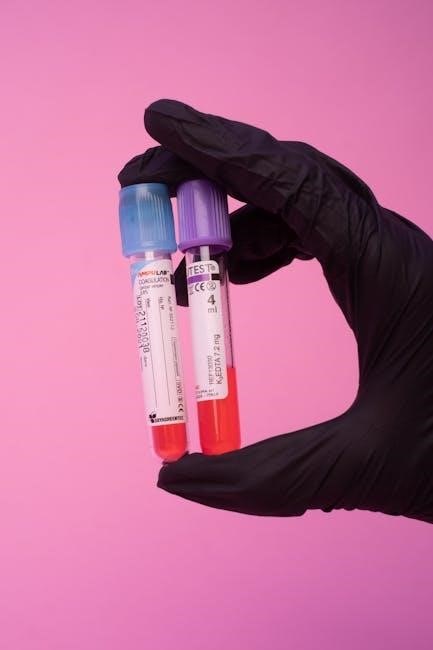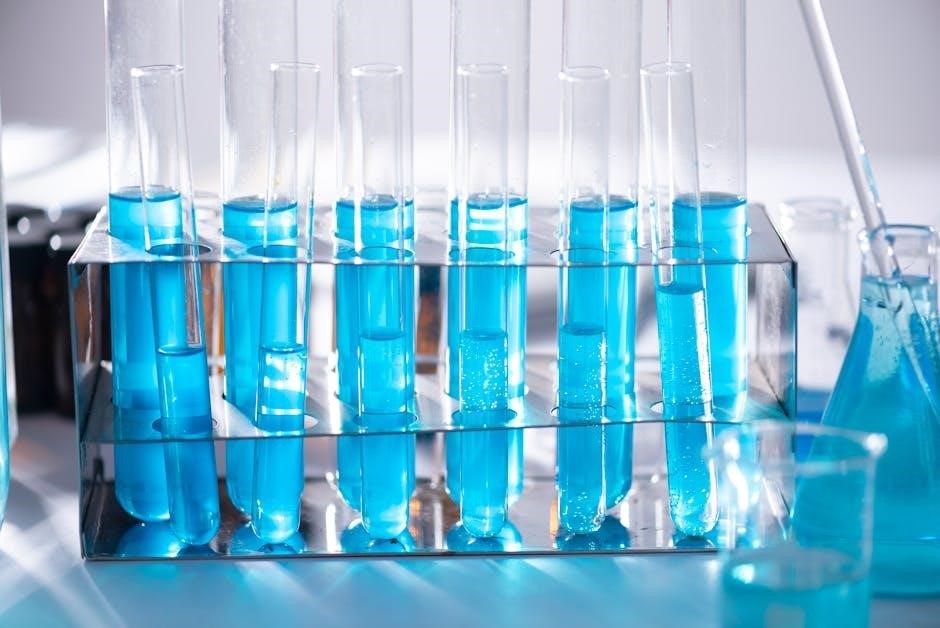Laboratory tests are medical procedures that help diagnose diseases, using various techniques to analyze samples of blood, urine, or tissue, providing valuable information about a patient’s health, and guiding treatment decisions effectively always.
Overview of Common Lab Tests
Laboratory tests are essential for diagnosing and managing various medical conditions, and a list of laboratory tests pdf can provide a comprehensive overview of common lab tests.
These tests include complete blood count, blood glucose, liver function tests, and urine chemistry, among others.
A complete blood count, for example, measures red blood cells, white blood cells, and platelets, providing valuable information about a patient’s overall health.
Liver function tests, such as alkaline phosphatase and aspartate aminotransferase, help assess liver function and detect potential liver damage.
Urine chemistry tests, including bilirubin and blood urea nitrogen, can help diagnose conditions such as kidney disease and liver disorders.
Understanding the different types of laboratory tests and their uses can help healthcare providers make informed decisions about patient care.
Laboratory tests can be used to monitor disease progression, evaluate treatment effectiveness, and detect potential health problems early on.
A list of laboratory tests pdf can serve as a useful resource for healthcare providers, providing a quick reference guide to common lab tests and their applications.
By familiarizing themselves with common lab tests, healthcare providers can better utilize laboratory results to improve patient outcomes.
Overall, laboratory tests play a crucial role in modern medicine, and a comprehensive understanding of common lab tests is essential for providing high-quality patient care.

Directory of Laboratory Tests
UCHealth Laboratory provides a list of laboratory tests, including common lab tests, with detailed information on test names and sample requirements, in a convenient directory format always online.
List of Laboratory Tests
A comprehensive list of laboratory tests is available, including CBC with manual diff, which requires 3 ml EDTA whole blood, and CBC, which measures red blood cells, white blood cells, and platelets, providing valuable health information.
The list also includes chemistry tests, such as blood glucose, liver function tests, and alkaline phosphatase, as well as hematology tests, like CRP, which is an enzyme produced by the liver, and albumin, which is a protein found in blood.
Additionally, the list features drug levels, including alcohol and bilirubin, direct and total, with reference ranges, such as 0.10-0.30 mg/dL for direct bilirubin, and 0.31-1.2 mg/dL for total bilirubin, helping healthcare professionals diagnose and treat various conditions, and other tests like blood urea nitrogen, calcium, and ionized calcium, with specific specimen requirements, such as 2.7ml blue top containing 3.2 sodium citrate for activated partial thromboplastin time.
The laboratory test list is a useful resource for medical professionals, providing detailed information on test procedures, sample requirements, and reference ranges, and is often available in a PDF format for easy access and reference, making it a convenient tool for healthcare providers.
The list is regularly updated to reflect changes in medical testing and technology, ensuring that healthcare professionals have access to the most current and accurate information, and is an essential component of modern healthcare, enabling medical professionals to make informed decisions about patient care, and is used in conjunction with other medical resources, such as patient history and physical examination, to provide comprehensive care.

Types of Laboratory Tests
Clinical chemistry and hematology tests are two main types, including blood glucose and liver function tests, providing valuable health information always accurately.
Clinical Chemistry Tests
Clinical chemistry tests are a type of laboratory test that measures the levels of various substances in the blood or urine, such as glucose, cholesterol, and enzymes. These tests are used to diagnose and monitor a wide range of conditions, including diabetes, kidney disease, and liver disease. The results of clinical chemistry tests are typically reported in numerical values, which are then compared to reference ranges to determine if the results are normal or abnormal. Clinical chemistry tests can be further divided into several subcategories, including endocrinology, toxicology, and molecular diagnostics. Each of these subcategories has its own set of specific tests and applications. For example, endocrinology tests measure the levels of hormones in the blood, while toxicology tests detect the presence of drugs or other toxic substances. Overall, clinical chemistry tests play a crucial role in the diagnosis and management of many diseases and conditions, and are an essential part of modern medical practice, using techniques to analyze samples of blood or urine.

Interpretation of Laboratory Test Results
Accurate interpretation of laboratory test results is crucial, using reference ranges and medical knowledge to guide diagnosis and treatment decisions effectively always and carefully every time with great attention to details and context.
Understanding Test Results
Understanding test results is a critical step in the diagnostic process, requiring a thorough analysis of the data and an understanding of the reference ranges. The results are typically presented in a table or graph format, making it easier to compare the values to the normal ranges. A healthcare provider will review the results, taking into account the patient’s medical history and symptoms, to determine the next course of action. The results may indicate a normal or abnormal condition, and in some cases, additional testing may be necessary to confirm a diagnosis. It is essential to note that laboratory test results are just one aspect of the diagnostic process, and a comprehensive evaluation of the patient’s overall health is necessary to make an accurate diagnosis. By understanding test results, healthcare providers can make informed decisions about treatment and care, ultimately improving patient outcomes and quality of life. Effective communication of test results is also crucial, ensuring that patients are well-informed and empowered to take an active role in their healthcare.

